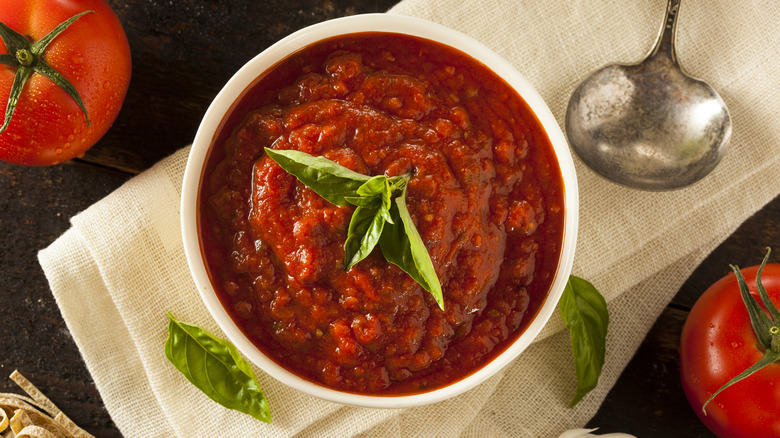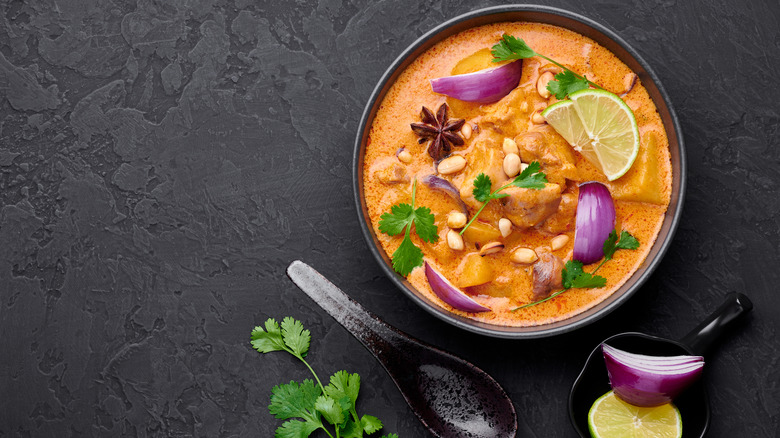The Simplest Mistake To Avoid When Making Homemade Sauces
Creating your own homemade sauces is immensely satisfying, but it can also be intimidating. If you want to get your sauce on, it helps to first learn a few basics. Once you understand the fundamentals of your sauce of choice, you can improvise and create something special.
The five classic French "Mother Sauces" are a great place to start, according to MasterClass. These sauces are described as "a base liquid combined with a thickening agent and additional ingredients for flavor." The French Mother Sauces include béchamel, velouté, espagnole, hollandaise, and tomato. Of course, the principles are rooted in French cuisine and don't cover every sauce, but the general knowledge may help you with other cooked sauces. Learning the preparation method and how the ingredients interplay to create the taste and texture makes it easier to create your own variations and even new sauces.
When improvising, add flavorings, herbs, or spices little by little and hygienically taste the sauce so you get a delicious balance (per SheKnows). That helps you avoid over-salting, over-sweetening, or adding too much spice. As you explore the incredible wide world of sauces, your ability to curate and create amazing flavors will improve. Also, be sure to avoid the simplest mistake so many of us make when making homemade sauces.
The secret sauce is time
When creating a sauce, one common mistake is not allowing the appropriate time for the ingredients to mingle. Some sauces are best fresh like pesto or guacamole because they contain fresh ingredients that break down or oxidize (per America's Test Kitchen). Other sauces require slow cooking to concentrate the flavors. You may have noticed sometimes leftover sauce tastes even better than the day it was prepared — whether it is an aromatic curry or tangy tomato sauce. Some ingredients take time to release their full flavors and to achieve the texture you seek, according to BBC Science Focus. With time, starches soak any free liquids, resulting in a thicker, smoother texture. Other ingredients also continue to marinade resulting in a more mature flavor.
Spices need time to get absorbed into any vegetables, starches, or meat. As University of Oxford food scientist Charles Spence told The Guardian, curry sauce improves as it simmers and overnight in the refrigerator since "flavors disperse more evenly. Though a curry may have as many as 20 or 30 different spices, the idea is they should meld together so that no singular element is identifiable in the mix." It's not just curry, either. This idea applies to many other sauces like tomato-based Italian Sunday Gravy, and Ina Garten's overnight mac and cheese. For more insight, consider some of the most common mistakes when making tomato sauce, since a bright marinara is different from an all-day Ragu where the sauce needs time for the flavors to build.

